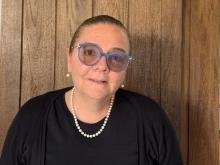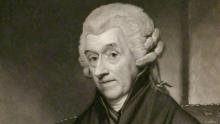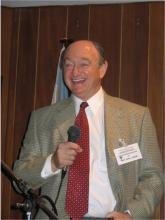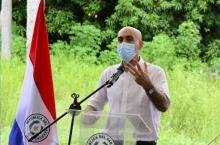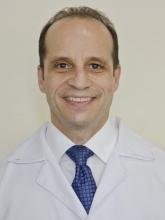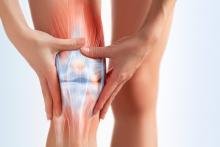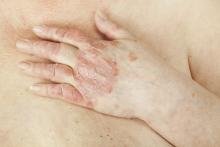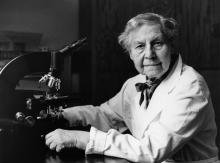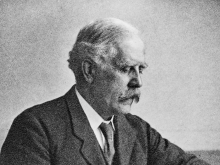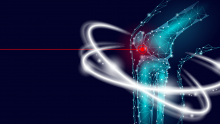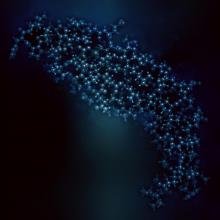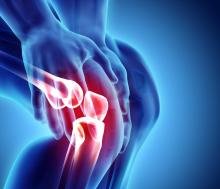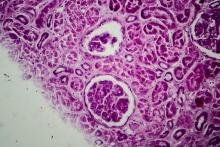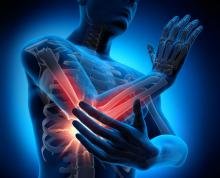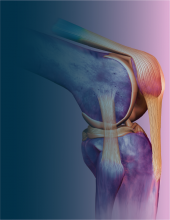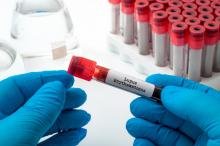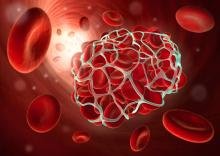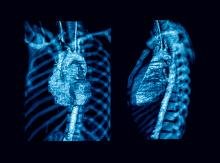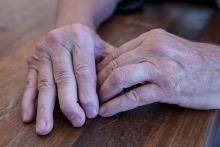
Alfred Baring Garrod
Alfred Baring Garrod (1819-1907) (Pic. 1) was born in Ipswich. His father, Robert Garrot, was a known farmer in the region. Alfred decided to study Medicine and apprenticed himself to Charles Chambers Hammond at the local Hospital. Later, he moved to University College Hospital where he qualified for M.B in 1842 and M.D in 1843. In 1845 he married Elizabeth Ann, daughter of Henry Colchester of Ipswich, with whom he had four sons and two daughters. One of his sons, Archibald Garrod, was also a doctor. (1,2)
He became a renowned professor and doctor thanks to his important contributions to our knowledge about the causes of gout and to the redefinition of various rheumatological diseases. He was the one who coined the term “rheumatoid arthritis” for the disease which we know as such today.
In this Interview with History we will talk about his legacy and the studies that led him to be considered one of the fathers of modern rheumatology.
Tell us about your beginnings
I started my career as a clinical assistant at the Chemistry Department of University College Hospital in London when I was 28 years old. My responsibilities included the analysis of body fluids and other samples send to the laboratory.
Later, in 1847, I was appointed assistant doctor and as professor of Materia Medica and Therapeutics at University College Hospital in London, in 1851. I participated actively in the affairs of the Hospital and in the establishment of the Museum of Medical Knowledge.
In 1862 I left University College Hospital and joined King’s College Hospital as a doctor and professor. I left the active hospital work in 1874 but continued as a consultant medical officer at the same hospital. (1,2)
Let’s talk about your legacy…
I think it was an extensive legacy. It was indeed in 1846, when, being an assistant doctor, I discovered the presence of uric acid in the blood of patients with gout, I presented the findings at a conference on 8 February 1848, demonstrating an increase of uric acid in patients with gout, that is not observed in patients with acute rheumatism or Bright’s disease (As the glomerulonephritis was called then). (3,4)
This is how he recalls the story (4): “1,000 grains of serum were taken for examination and evaporated to dryness in thin layers in a water-bath. It was then powdered and treated with rectified spirit, boiled for about ten or fifteen minutes, re-treated in the same way, and the spirit solutions preserved for examination. After washing again with spirit, the dried serum was exhausted by boiling distilled water, the operation being repeated two or three times and the watery solutions mixed. When a small quantity of this fluid was evaporated with the addition of nitric acid, and then held over ammonia vapor, distinct evidence of the existence of uric acid was afforded by the production of the beautiful purple tint of murexide or purpurate of ammonia. The watery solution was evaporated until it became slightly thick and, when cool, was acidulated with pure hydrochloric acid. On standing for a few hours, crystals of uric acid were deposited, which were then collected, washed with alcohol and weighed."
On the other hand, I also developed the “Thread Test”, a semiquantitative method to determine uric acid in serum or urine. I demonstrated that there were small quantities of uric acid around the thread in the serum of normal persons and patients with gout and I demonstrated as well urate deposits in the articular cartilage of patients with gout (3,4). And I argued that uric acid was found in healthy persons as well as in patients with gout and suggested the presence of uric acid in the urine of patients with chronic tophaceous gout and raised the issue of the role of the kidneys in the excretion of uric acid and other solutes (3,4).
Indeed, I have to say that I wrote that “deposited urate of soda may be looked upon as the cause and not the effect, of the gouty inflammation”. This was the first chemical test ever performed to diagnose a rheumatic disease (5).
These experiments were overlooked for more than half a century until the publication of a seminal paper by McCarty and Hollander (6), which showed that crystals in the synovial fluid of patients with gout were composed of monosodium urate.
And finally, in my 1876 publication I describe the use of colchicine for the treatment of acute crisis and the role of prophylaxis (4), an extraordinary observation for that time.
What was your contribution as regards rheumatoid arthritis?
It is likely that rheumatoid arthritis had been present as a disease for a long time, certainly since the time of Sydenham (7), but the nomenclature had been confused with terms like rheumatic gout, chronic rheumatism, rheumalgia, scorbutic rheumatism, etc.
It was then when I wrote about the term “rheumatoid arthritis” in my notebook in the autumn of 1858. At that time, I thought “although I am unwilling to add any more names, I cannot help to express the wish of finding one for this disease, it implies no necessary relation between it and gout or rheumatism”. I therefore suggested that it was a different disease: “Perhaps rheumatoid arthritis would answer the object by which the term I imply an inflammatory affection of the joints, not unlike rheumatism (but) in some of its characters differing materially from it”
It was in 1859 when I proposed the name of arthritis rheumatoid to categorize it as a different condition and definitively replace the various names it had until then (rheumatic gout, knotty rheumatism, and chronic rheumatic arthritis) (4,8). The term was accepted in Great Britain and other European countries, and it has remained ever since.
The name “Rheumatoid Arthritis” is a great legacy, although not without some controversies. I rejected the chronic rheumatism of Heberden and the rheumatic gout of Fuller and chose the name “arthritis rheumatoid” for the disease and provided illustrations. I divided it into acute, chronic, and irregular forms of generalized and localized type.
You also published books. Tell us about that and what is raised there
Essentials of Materia Medica and Therapeutics was published in 1855 and went through 13 editions (9), and my classic, The Nature and Treatment of Gout and Rheumatic Gout, published in 1859, in which I differentiate patients with gout and patients with arthritis rheumatoid. (10)
In Chapter XV of my book, I described with great precision the disease we know today, delineating it from gout and rheumatic fever (see Figures 2 and 3). In addition, I illustrated the characteristic deformities and denoted the serious character of the disease with respect to the others, due to its difficult control and disabling clinical course. However, I must note that, despite the exhaustive clinical description of RA, I did not refer to joint involvement from the histopathological point of view.
Figures 2 and 3
Cover sheet of The Nature and Treatment of Gout and Rheumatic Gout and table showing the differential diagnosis between gout and rheumatoid arthritis included in Chapter XV of the book.
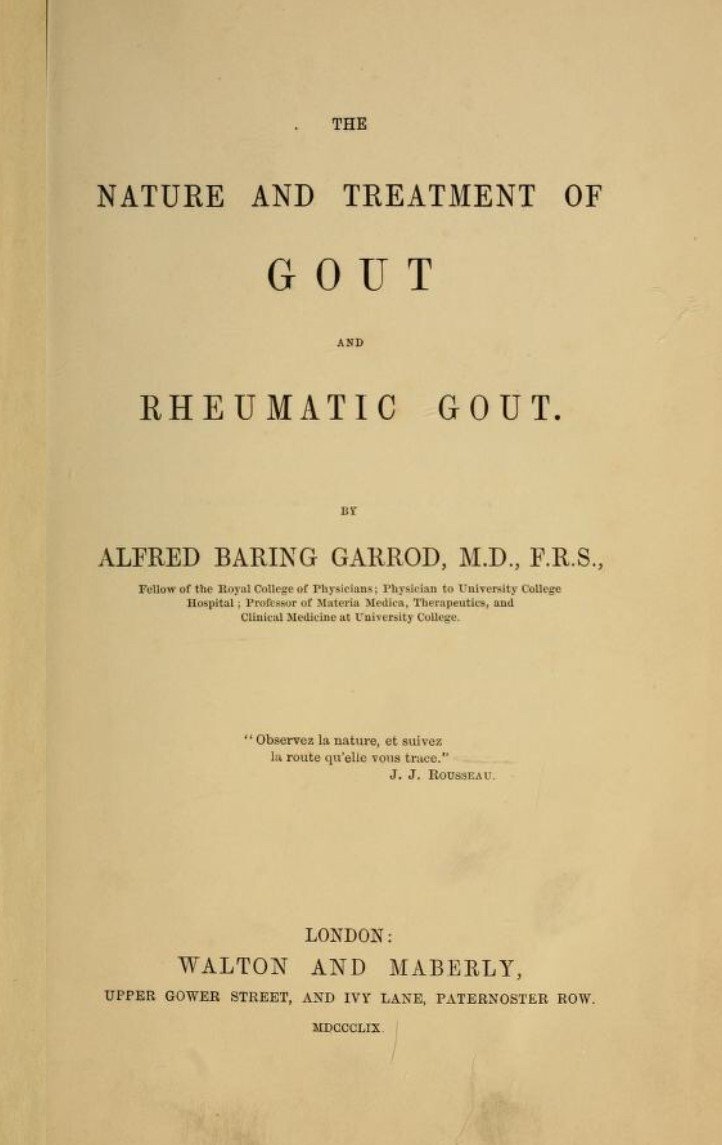

Source
The nature and treatment of gout and rheumatic gout by Garrod, Alfred Baring, Sir, 1819-1907 Tomado de Digitized by the Internet Archive in 2011 with funding from Open Knowledge Commons and Harvard Medical School. Available at https://archive.org/details/naturetreatmento00garr
In your treatise on arthritis, you make ten propositions. Could we talk about some of them?
- High uric acid levels are present (and essential) before, during and between attacks of gout.
- High uric acid levels can be asymptomatic.
- Kidneys are involved in both, the early stages of the disease with a specific functional defect of inability to excrete uric acid and late in the disease with the development of structural changes. I proposed that hyperuricemia was the result of either increased production or inability of kidneys to excrete uric acid efficiently.
- Only in the gout there is deposition of urate of soda in the inflamed tissues.
In addition to those already mentioned, what other awards do you have?
I became a fellow of the Royal College of Physicians in 1856 and a fellow of the Royal Society in 1858. I delivered the famous “Goulstonian” Lectures in 1858 and “Lumenian” Lectures in 1883. I was Vice-President of the Royal College of Physicians and served in 1860 as President of Medical Society in London.
In 1887, I was knighted by Queen Victoria on the occasion of her first Jubilee. I was the firs recipient of a medal founded in memory of Dr. Moxon by the Royal College of Physicians. I was also an honorary member of Berliner Gesellschaft für Innere Medizin in Berlin and an active member of British Pharmacopoeia Committee.
And as a curious fact, a street has been named after me in Aix les Bains in London (11).
Thanks to all the studies, discoveries and statements we discussed, I am considered one of the precursors of modern rheumatology.
Figures
Figure 1
Alfred B Garrod. Available at: Unknown author - [1], Public domain https://commons.wikimedia.org/w/index.php?curid=33125820
Figures 2 and 3
The nature and treatment of gout and rheumatic gout by Garrod, Alfred Baring, Sir, 1819-1907 Retrieved from Digitized by the Internet Archive in 2011 with funding from Open Knowledge Commons and Harvard Medical School. Available at https://archive.org/details/naturetreatmento00garr
REFERENCES
- G. D. Storey, Alfred Baring Garrod (1819–1907), Rheumatology, Volume 40, Issue 10, October 2001, Pages 1189–1190, https://doi.org/10.1093/rheumatology/40.10.1189
- Sir Alfred B Garrod . Royal College of Physicians Lancet, 1908; B.M.J., 1908; D.N.B., 2nd Suppl, ii, 84. Disponible en https://history.rcplondon.ac.uk/inspiring-physicians/sir-alfred-baring-garrod
- Garrod AB. On the Blood and Effused Fluids in Gout, Rheumatism, and Bright's Disease. Med Chir Trans. 1854;37:49-60.1. doi: 10.1177/095952875403700107.
- ALFRED BARING GARROD. JAMA. 1964;187(4):299–300. doi:10.1001/jama.1964.0306017005301745.
- Nuki G, Simkin PA. A concise history of gout and hyperuricemia and their treatment. Arthritis Res Ther. 2006;8 Suppl 1(Suppl 1):S1. doi: 10.1186/ar1906. Epub 2006 Apr 12
- McCarty DJ, Hollander JL. Identification of urate crystals in gouty synovial fluid. Ann Intern Med. 1961;54:452–460. DOI: 10.7326/0003-4819-54-3-452
- Iglesias A . Thomas Syndenham . The first Rheumatologist . Global Rheumatology Nov 20 2020 . DOI https://doi.org/10.46856/grp.26.e030
- PARISH LC. An historical approach to the nomenclature of rheumatoid arthritis. Arthritis Rheum. 1963 Apr;6:138-58. doi: 10.1002/art.1780060206.
- Garrod, A. B.: The Essentials of Materia Medica, Therapeutica, and the Pharmacopoeias, London: Walton and Maberly, 1855.
- Garrod, A. B.: A Treatise on Gout and Rheumatic Gout (Rheumatoid Arthritis) 3rd ed, London: Longmans, Green, & Co., 1876.
- Sir Alfred Baring Garrod Joshi V, Poojary V . Disponible en https://japi.org/r2c4d494/sir-alfred-baring-garrod


































